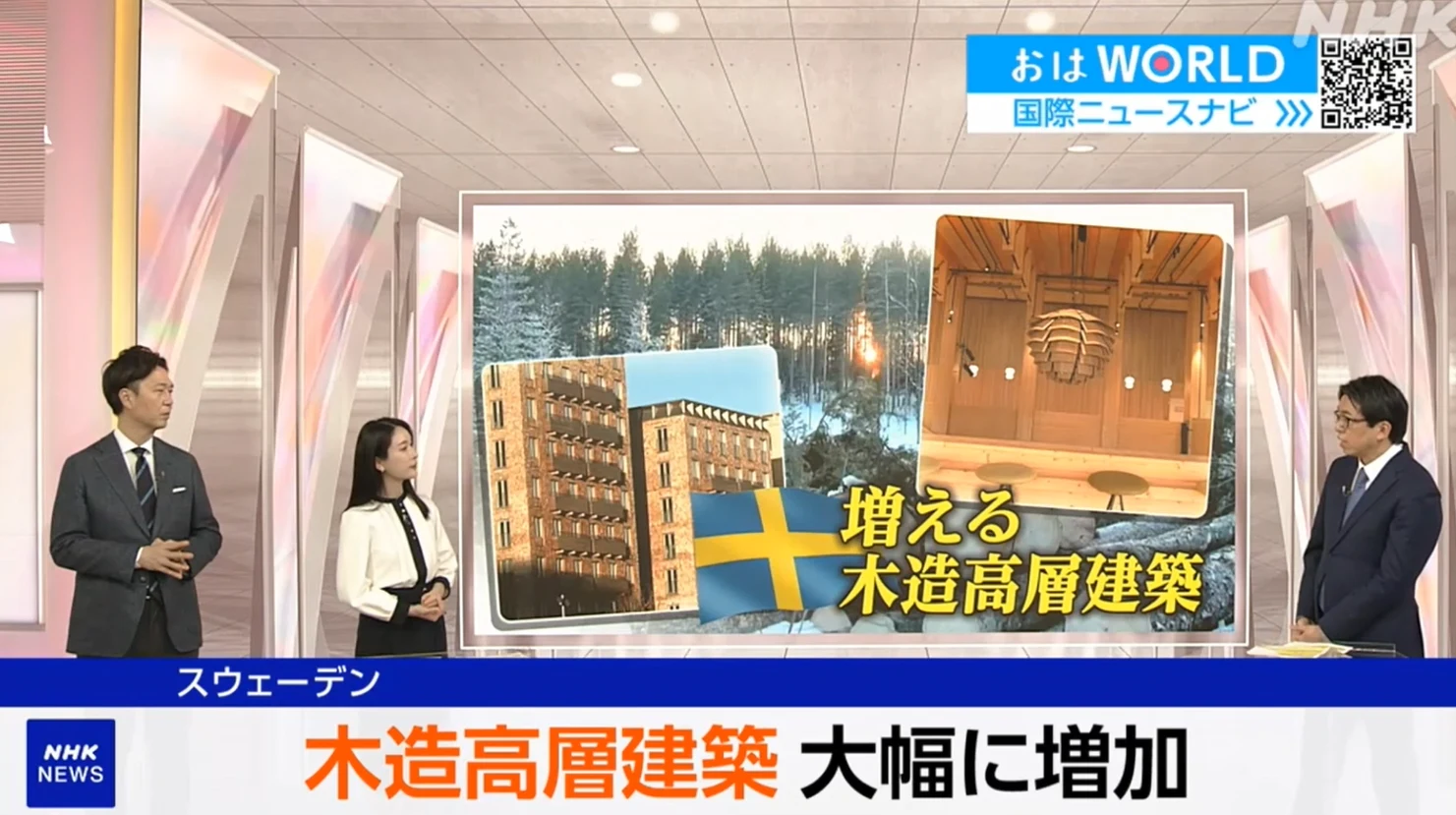The finished report has been shown to around 10–15 million Japanese people by their national public service broadcaster NHK.
In part of its content, the report explains that:
- timber frames have almost the same load-bearing capacity as concrete and can be constructed at a similar cost,
- the carbon footprint of wooden buildings is half that of traditional buildings,
- the volume of Swedish forest has doubled over the past 100 years.
The request for the Japanese film crew of three people to visit us in Västerbotten came at short notice. The crew wanted to create a TV report showing how far ahead Sweden is when it comes to wood construction. We arranged for them to visit both the forest and Bygdsiljum Sawmill, as well as Sara Kulturhus, so they were able to see the entire value chain ‘from seed to building’.
Wood buyer Lars-Erik Lindmark took the crew out into the forest in Östra Falmark outside Skellefteå:
“Representing Holmen and showcasing our forestry was so much fun,” says Lars-Erik. “They seemed genuinely interested in our approach to sustainability, and how we leave trees in clearings and implement other nature conservation measures to promote biodiversity and outdoor recreation, for example. I was also asked some technical questions about the machines, which they were very impressed by.”
Production manager Jon Martinson welcomed the film crew to Bygdsiljum Sawmill.
“I explained how we manage the whole value chain, from planting trees to building an arts centre and other buildings in wood. It was great to see them showing such an interest in our products and our expertise. It’s amazing that a story about a building in little old Skellefteå is making such waves all over the world,” says Jon.
In a relatively short time, Holmen’s strong, sustainable and long-term value chain, from seed to building, has received international media attention, not least through an article in The Washington Post last autumn and now this report on NHK in Japan.


